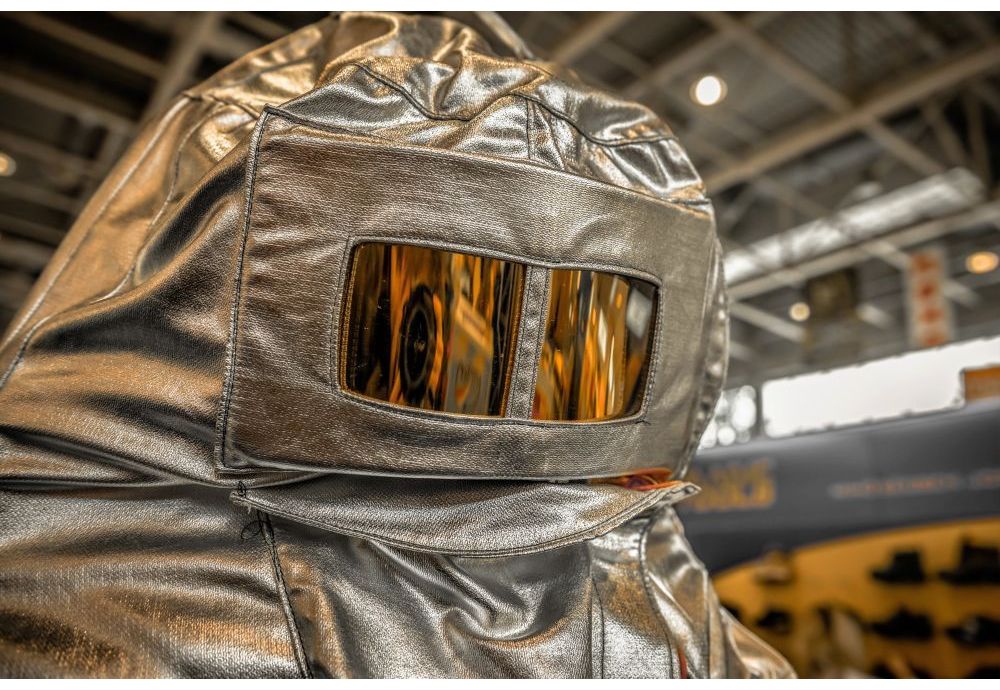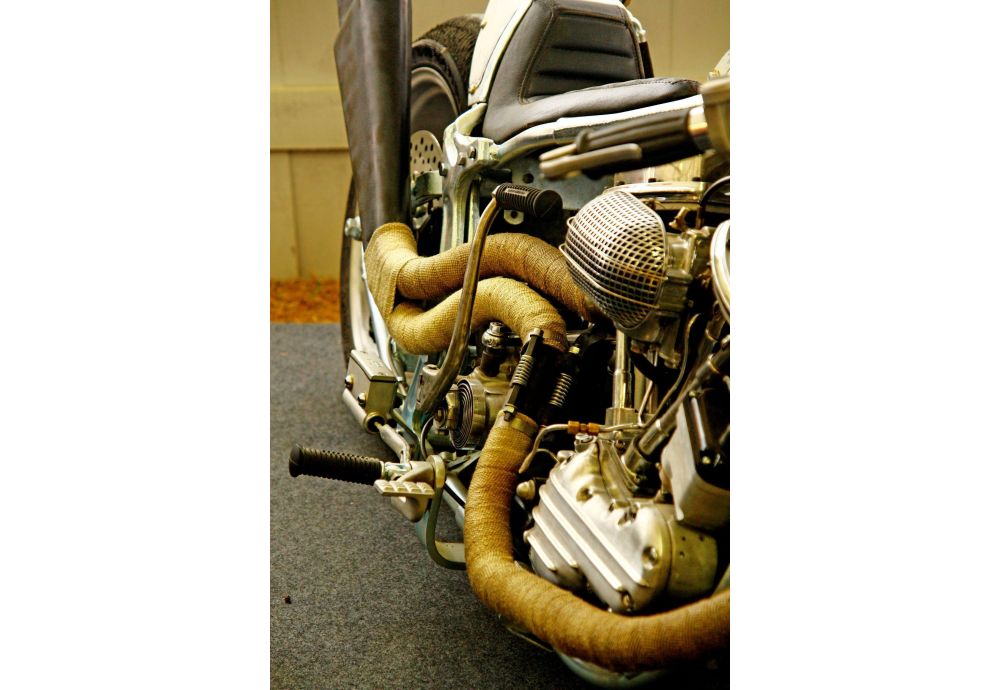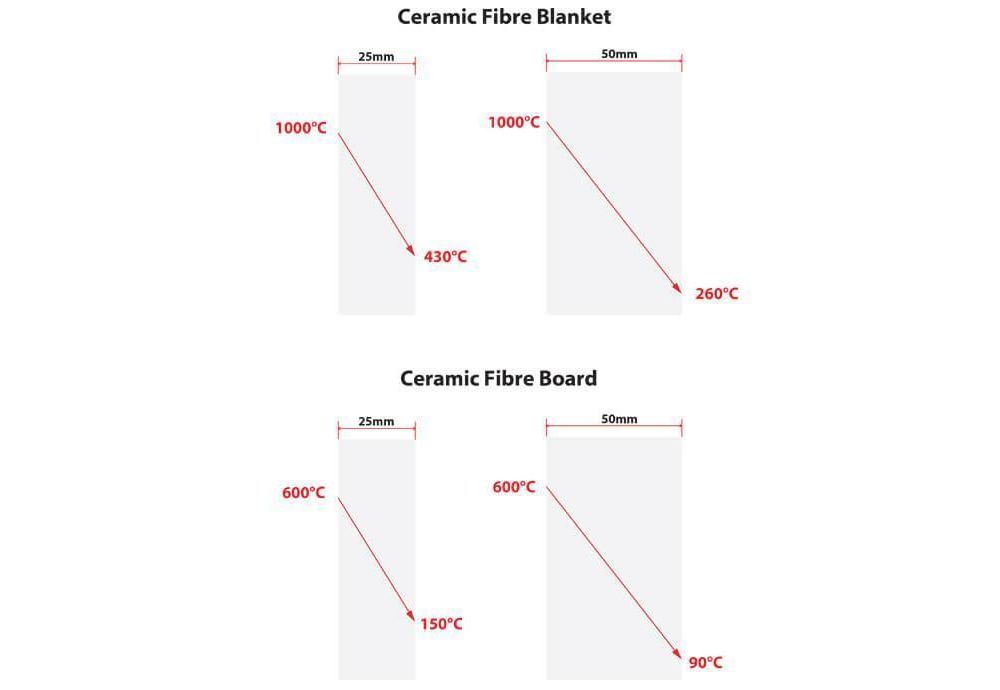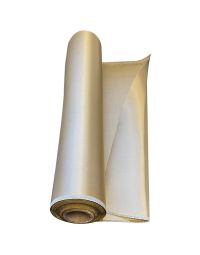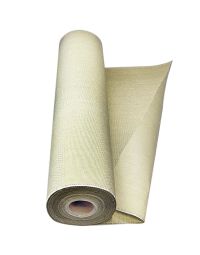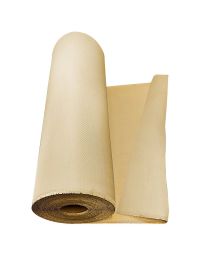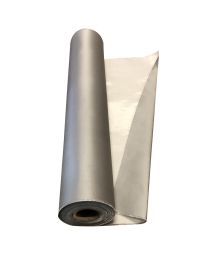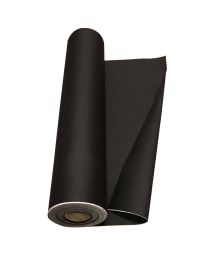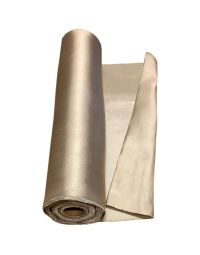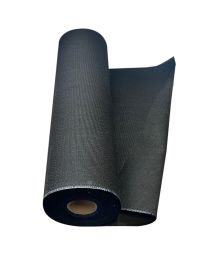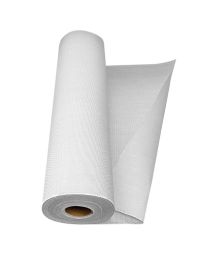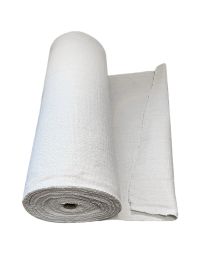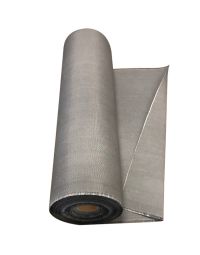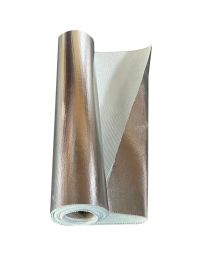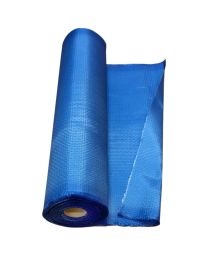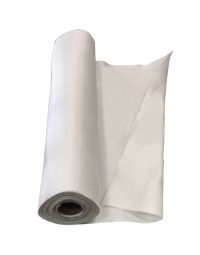Thermal textiles are essential in industrial applications requiring high-temperature resistance, durability, and protection from extreme conditions. Heat resistant fabrics play a critical role in sectors such as metallurgy, glass production, power plants, and petrochemical industries, where exposure to intense heat, mechanical stress, and chemical interactions is common. By selecting the right thermal textile, industries can improve efficiency, safety, and equipment longevity. This guide explores technical high temperature textiles, their properties, and their suitability for different industrial applications.
Properties of High Temperature Textiles
|
Material |
Temperature (°C/°F ) |
Weather Proof |
Abrasion Resistant |
Water Repellence |
Oil/Grease Resistance |
Chemical Resistance |
|
Aramid |
300 / 570 |
** |
*** |
* |
* |
** |
|
Glass Fibre |
550 / 1020 |
** |
** |
** |
** |
** |
|
Glass Fibre + wire reinforced |
600 / 1110 |
** |
** |
** |
** |
** |
|
Ceramic+glass |
650 / 1200 |
*** |
*** |
** |
** |
*** |
|
Bio soluble |
1100 / 2010 |
** |
** |
*** |
** |
** |
|
Ceramic |
1100 / 2010 |
*** |
*** |
*** |
** |
*** |
|
PVC |
90 / 190 |
* |
* |
* |
* |
* |
|
Aluminium |
150 / 300 |
** |
* |
* |
* |
* |
|
Silicone |
250 / 480 |
*** |
** |
*** |
*** |
** |
|
PU |
120 / 250 |
** |
** |
** |
** |
** |
|
Neoprene |
130 / 270 |
** |
** |
** |
** |
* |
|
Acrylic |
400 / 750 |
** |
* |
* |
* |
* |
|
Calcium Silicate |
700 / 1290 |
*** |
** |
*** |
*** |
*** |
|
Graphite Coated |
650 / 1200 |
*** |
*** |
*** |
*** |
*** |
|
Vermiculite Coated |
750 / 1380 |
*** |
*** |
*** |
*** |
*** |
|
Silica Fibre |
1000 / 1830 |
*** |
*** |
*** |
*** |
*** |
|
Silica Fibre + Vermiculite |
1000 / 1830 |
*** |
*** |
** |
*** |
*** |
Key: * low levels, ** medium levels, *** high levels
Types of High Temperature Thermal Textiles
Aramid
Aramid fibres, including Kevlar®, offer a high strength-to-weight ratio and exhibit heat resistance up to 300°C / 570°F. One of the standout features of aramid fibres is their excellent abrasion resistance, making them suitable for protective clothing, conveyor belts and industrial reinforcement applications. Their ability to withstand mechanical stress without breaking down makes them ideal for harsh environments where durability is key.
While aramid fibres excel in many areas, their resistance to oils, grease and chemicals is relatively moderate, but specialised coatings can enhance these properties for applications that require additional protection. Aramid fibres are not inherently water-repellent, as they absorb 3-7% moisture, which can slightly reduce their tensile strength over time, but their water repellence can be enhanced with specialised coatings like fluoropolymer or silicone-based treatments to improve performance in humid or wet environments.
Glass Fibre and Wire-Reinforced Glass Fibre
Glass-based refractory materials, available as pure glass and glass reinforced with wire, provide excellent insulation properties. Pure glass can withstand temperatures up to 550°C / 1020°F, while wire-reinforced glass extends this limit to 600°C / 1110°F.
Pure glass textiles are primarily used in thermal insulation and heat shielding applications where flexibility and high-temperature resistance are required. They can withstand temperatures up to 550°C / 1020°F and are commonly found in fire blankets, welding curtains, expansion joints and insulation wraps for industrial furnaces and pipelines. Pure glass textiles are also valued for their non-combustibility and lightweight nature, making them a preferred choice in aerospace and automotive applications, where fire protection and thermal barriers are necessary.
The addition of wire reinforcement extends the durability and tensile strength of pure glass, allowing it to withstand higher mechanical stress while providing the same thermal insulation properties. With a slightly higher heat resistance of 600°C / 1110°F, it can be used in high-strength fire curtains, protective barriers, and heavy-duty insulation layers where additional reinforcement is required. These textiles are particularly beneficial in applications where materials are subject to frequent movement, abrasion, or mechanical wear, such as high-temperature gaskets, furnace door seals, and heat shields for industrial processing plants.
Ceramic Fibre Textiles and Ceramic with Glass Fibre
Ceramic refractories are renowned for their ability to withstand temperatures up to an impressive 1100°C / 2010°F, while ceramic+glass composites maintain their integrity up to 650°C/1200°F. This exceptional heat resistance makes them ideal for use in furnaces, kilns, foundries and other high-temperature industrial processes. When combined with glass, they provide enhanced structural stability and insulation properties. Ceramics exhibit excellent resistance to abrasion, chemicals, and mechanical stress, ensuring durability in harsh environments where longevity is critical. These materials are commonly used in thermal barriers, furnace linings, and industrial gaskets due to their ability to resist degradation under prolonged exposure to high temperatures and corrosive substances. Additionally, ceramic textiles are non-combustible, making them an essential component in fireproofing systems.
When ceramic materials are combined with glass fibers, the resulting composite offers enhanced flexibility, mechanical strength and improved insulation properties. These materials maintain heat resistance up to 650°C / 1200°F while providing better durability and tensile strength compared to pure ceramic textiles. Their applications include insulation wraps, protective barriers, and industrial blankets where a balance of heat resistance and mechanical resilience is required. The incorporation of glass fibers reduces brittleness, making ceramic+glass composites easier to handle, install and maintain in dynamic environments where materials experience vibration, movement or mechanical stress.
Both ceramic and ceramic+glass composites excel in weatherproofing and their superior resistance to environmental factors contributes to their long-term durability and reliability in harsh industrial conditions. Both materials exhibit good water repellent properties, helping to maintain their structural integrity in damp conditions. Their resistance to oils and greases is also noteworthy, further enhancing their versatility in various industrial applications.
Bio-Soluble Textiles
Bio-soluble textiles provide an advanced thermal insulation solution, combining high-temperature resistance with enhanced safety and environmental benefits. Capable of withstanding up to 1100°C / 2010°F, these materials provide good weatherproofing and excellent chemical resistance, making them suitable for applications where safety and sustainability are priorities. Bio-soluble textiles are increasingly used in industrial insulation and fireproofing due to their reduced environmental impact and easier disposal compared to traditional refractory materials. They are often found in heat shields, boiler insulation, and protective clothing for high-temperature environments.
PVC
Polyvinyl chloride (PVC) is a cost-effective refractory material used in applications requiring lower temperature resistance, up to 90°C / 190°F. It is commonly found in industrial covers, protective barriers and low-heat insulation layers where high-temperature exposure is not a concern. PVC materials are lightweight, easy to process, and resistant to various chemicals, making them suitable for protective coatings in industrial and commercial settings. However, due to their limited heat resistance, they should not be used in environments where prolonged exposure to high temperatures is required.
Aluminium
Aluminium-based refractory materials withstand up to 150°C / 300°F and are valued for their lightweight nature and reflective properties. They are used in heat shields, reflective barriers, and lightweight insulation where moderate heat resistance and high durability are required. Aluminium coatings are also commonly applied to textiles to enhance their resistance to radiant heat, making them useful in fire-resistant clothing and industrial safety applications. Despite its good thermal reflectivity, aluminium has limited abrasion resistance and can degrade when exposed to harsh chemicals over time.
Silicone Coated Glass Fibre
Silicone is an excellent choice for applications requiring both heat resistance (up to 250°C / 480°F) and flexibility. It is commonly used in industrial gaskets, thermal protection sleeves, and sealing applications where exposure to high temperatures, chemicals, and moisture is frequent. Silicone-coated textiles provide excellent resistance to water, oils, and greases, making them suitable for demanding industrial environments. They maintain flexibility over a wide temperature range, allowing them to be used in applications where movement and expansion are necessary. Additionally, their non-stick properties make them an ideal choice for conveyor belts and food processing environments.
Polyurethane and Neoprene: Versatile Elastomers
Polyurethane (PU) and Neoprene are both elastomers, meaning they are highly flexible and capable of returning to their original shape after being stretched or compressed.
Polyurethane (PU) provides flexibility and moderate heat resistance up to 120°C / 250°F. PU fabrics are frequently used in industrial protective layers, insulation coatings and sealing applications where abrasion resistance is required but extreme heat exposure is not a primary concern. PU materials offer excellent mechanical durability, oil resistance, and impact absorption, making them useful in gaskets, vibration dampening components, and industrial safety gear.
Neoprene, on the other hand, withstands temperatures up to 130°C / 270°F and is highly resistant to weathering, ozone, and flame exposure, making it a preferred choice for fire-resistant garments, wetsuits, and protective gloves. However, both materials can degrade over time when exposed to prolonged high temperatures or strong chemicals.
Acrylic
Acrylic-based refractory materials withstand temperatures up to 400°C / 750°F while maintaining optical clarity, making them suitable for heat-resistant windows, shields, and protective barriers in industrial environments. Acrylic textiles and coatings are commonly used in applications where transparency, durability, and UV resistance are required, such as high-temperature observation panels and infrared radiation shields. While acrylic materials provide good weather resistance, they have relatively low abrasion resistance and can be susceptible to scratching and chemical degradation. For industrial applications requiring higher durability, acrylic may be reinforced with additional coatings to improve performance.
Calcium Silicate
Calcium silicate offers high insulation efficiency, withstanding temperatures up to 700°C / 1290°F. It is widely used in power plants, furnaces, and kilns where superior thermal insulation, durability, and chemical resistance are necessary. This material is known for its low thermal conductivity, making it ideal for reducing heat loss in industrial and commercial applications. Calcium silicate boards and textiles are frequently used for structural fire protection, as they can provide extended fire resistance in construction and process industries. Additionally, they are resistant to water and moisture absorption, allowing them to maintain insulation performance even in humid conditions. However, they are relatively rigid and may require careful handling to prevent cracking during installation.
Graphite-Coated Textiles
Graphite-coated refractory textiles withstand up to 650°C / 1200°F and provide a low-friction surface, making them ideal for mechanical seals, high-temperature gaskets and lubrication-enhanced industrial components. The presence of graphite improves thermal conductivity, allowing for efficient heat dissipation while reducing wear and tear in applications involving sliding or rotating parts. These materials are commonly used in furnace linings, expansion joints, and aerospace industries due to their superior durability under thermal cycling. Additionally, graphite coatings enhance resistance to oxidation and corrosion, making them highly effective in chemically aggressive environments such as steelmaking and petrochemical processing.
Vermiculite-Coated Fabrics
Withstanding up to 750°C / 1380°F, vermiculite coatings improve durability, waterproof properties, and chemical resistance, making them a preferred choice for industrial textiles used in fireproof applications. The addition of vermiculite enhances the material's insulating properties, creating a thermal barrier that slows down heat transfer and protects underlying surfaces from extreme temperatures. These textiles are widely used in welding blankets, furnace curtains, and fire-resistant barriers in high-risk industrial environments. Vermiculite coatings also provide superior resistance to thermal shock, ensuring structural stability even in rapid temperature fluctuations. This makes them particularly useful in applications where textiles are exposed to direct flames, molten metals, or high-intensity heat sources.
Silica Fibre Cloth
Silica-based textiles can endure extreme temperatures up to 1000°C / 1830°F. They have exceptional thermal stability, weatherproofing, and resistance to chemicals, making them widely used in furnace linings, heat shields, and insulation in metal processing industries. Silica textiles are particularly effective in protecting against molten metal splashes and high-temperature gas exposure, making them ideal for foundries, welding applications, and aerospace industries. Due to their low thermal conductivity, silica materials also help improve energy efficiency by reducing heat loss in industrial furnaces and kilns.
Silica Fibre Cloth with Vermiculite
On the other hand, silica vermiculite textiles enhance the properties of standard silica by incorporating vermiculite coatings, improving durability and mechanical strength. These materials offer superior resistance to abrasion, making them ideal for heavy-duty industrial applications, including fire barriers and high-performance thermal insulation. The vermiculite layer enhances fire resistance and structural integrity, ensuring long-term reliability in demanding environments.
Conclusion: Selecting the Right Refractory Textile
Selecting the right thermal textile depends on temperature requirements, environmental exposure, and mechanical wear conditions. High-temperature ceramics are best for extreme heat applications, while flexible elastomers provide adaptability. Careful material selection ensures efficiency, safety and durability in industrial applications.






